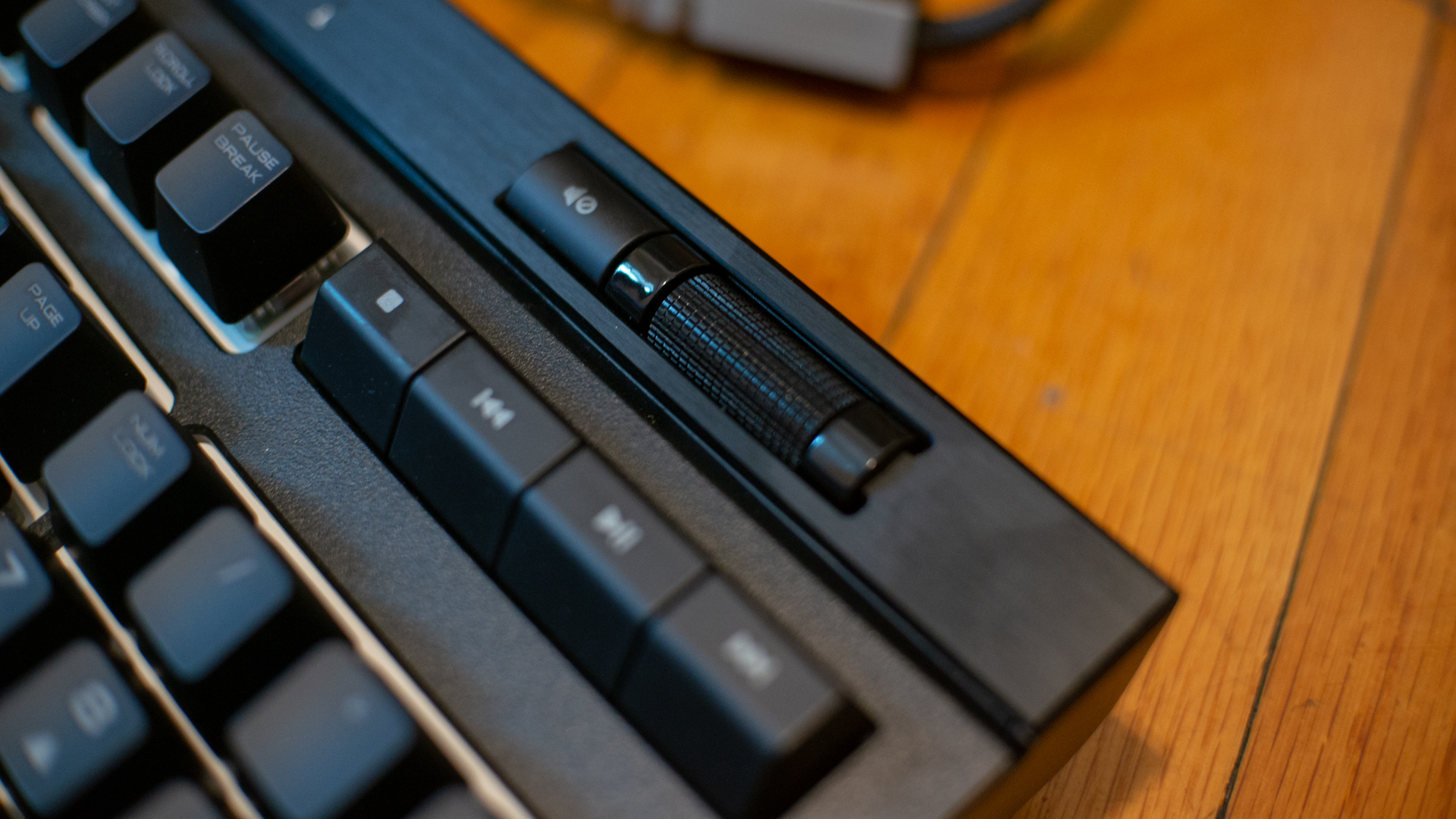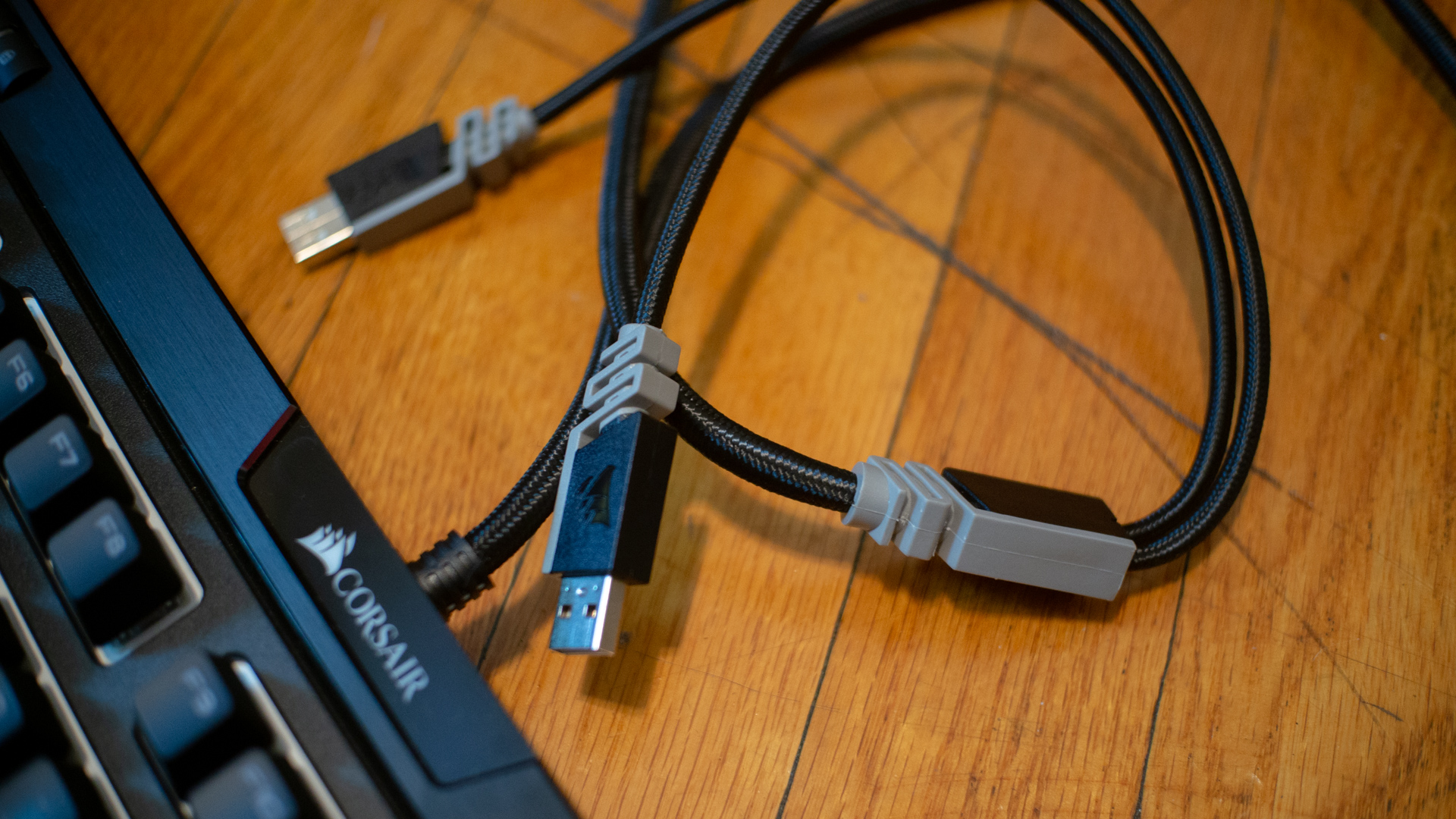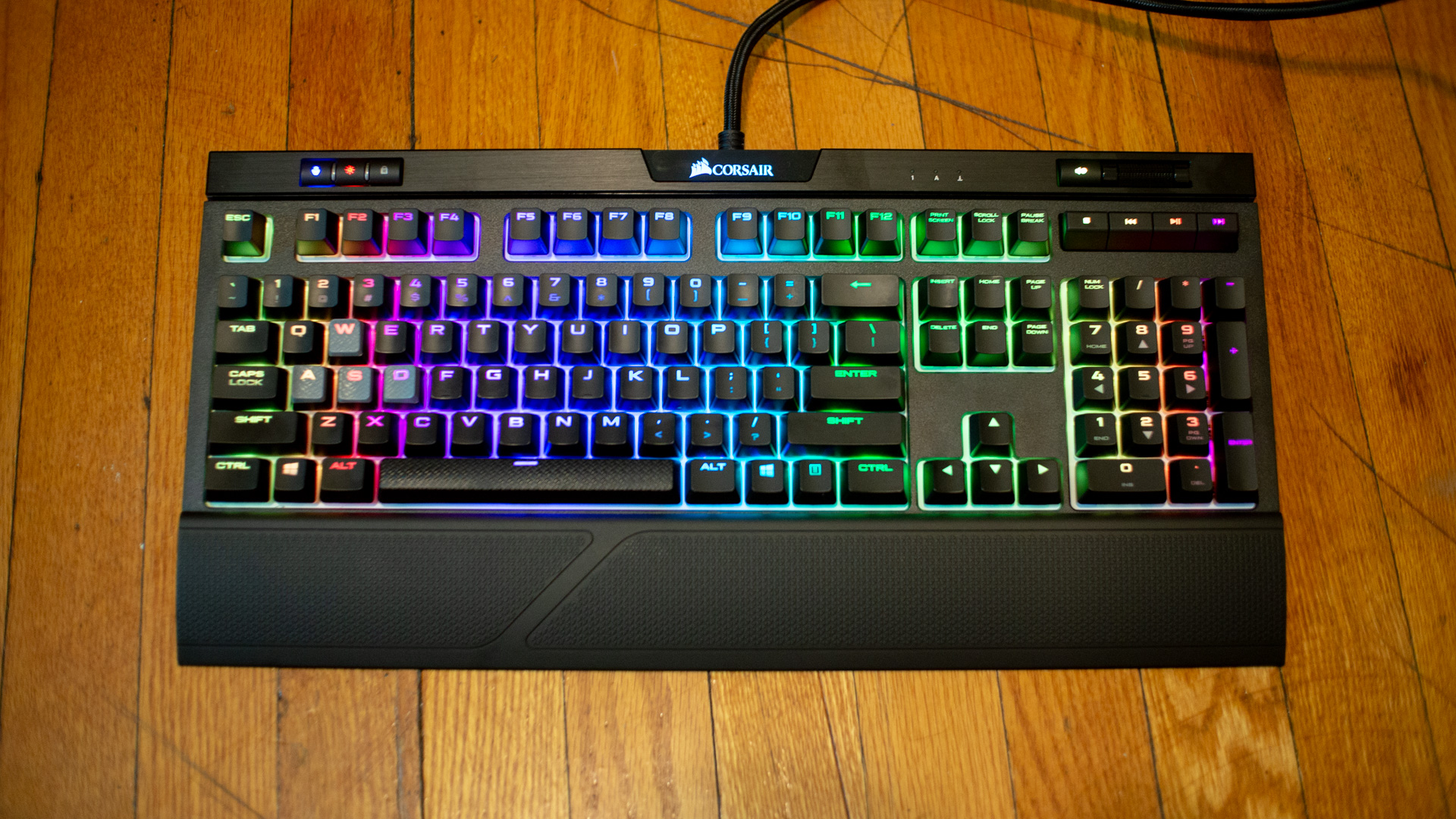TechRadar Verdict
The Corsair Strafe RGB MK. 2 has the features you’d expect from a mechanical gaming keyboard, but a lack of refinement in the design leaves it lagging behind the competition.
Pros
- +
USB pass-through
- +
Handy extra buttons
- +
Cherry MX Silent switches are quieter
Cons
- -
Crazy thick cable
- -
Oddly squishy key presses
- -
Difficult customization software
- -
Not a competitive offer
Why you can trust TechRadar
Corsair has superseded the earlier Strafe RGB keyboard with the release of its Corsair Strafe RGB MK. 2, which takes the formula of the original and adds just a few quality-of-life improvements. While it’s a good gaming keyboard, it’s not the most compelling option on the market.
The Corsair Strafe RGB MK. 2 offers a full RGB, Cherry MX silent mechanical switch (you can also find it with MX Red switches) and a solid build for $149 (£149, AU$219). That makes it noticeably more expensive than the similar $119 (£119, AU$199) Corsair K68 RGB and on even price footing with the quiet $149 (£159, AU$179) Logitech G513.
The Corsair Strafe RGB MK. 2 offers a good gaming experience, but compared to the competition, it’s not offering enough to stand above the crowd.






Design
Corsair’s latest keyboards have done a nice job of remaining low-key about their gamer intent, and the Corsair Strafe RGB MK.2 is no different. It features a boxy design with hard edges and no extraneous curves or bits of flair to make it seem like some kind of race car keyboard (*cough cough* Roccat Horde AIMO).
Aside from the entirely optional and customizable RGB lighting and the texturized space key, the Corsair Strafe RGB MK.2 doesn’t appear out of place on an office desk. And with Cherry MX Silent key switches, it’ll be more readily welcome in public space (and by your coworkers) than a keyboard with Cherry MX Reds or Blues.
This is your typical full-size keyboard complete with dedicated media buttons and a volume scroll bar. It also adds in a Windows Key lock, a button to quickly adjust the keyboard backlight brightness, and a button for cycling through different backlighting profiles that can be stored in the keyboard’s memory.
The keycaps feel like they’re somewhere in the middle of normal plastic keycaps and soft-touch material, which feels nice on the fingertips, but picks up grease easily. Corsair includes some extra gray-topped, textured keycaps that can be swapped in for FPS and MOBA gamers. We used the FPS keycaps for WASD, which are angled differently to keep your fingers from accidentally sliding off during gameplay.
Sign up for breaking news, reviews, opinion, top tech deals, and more.
The Corsair Strafe RGB MK. 2 also includes a textured wrist rest that’s just a touch too hard to be called comfortable, but it still beats the edge of a desk. The Corsair Strafe RGB MK. 2 also has USB pass-through, but to achieve this, Corsair opted for an incredibly thick ( and we mean Thicc) braided cable that ends in two bulky USB connectors.
Corsair’s RGB lighting is as good as we’re used to seeing on Cherry switches, with clear light shining through the upper half of keycaps but incomplete coverage for the lower half. The lighting is also fully customizable, but Corsair’s iCue customization software isn’t nearly as straightforward as Razer’s or SteelSeries’ software

Performance
The performance of the Corsair Strafe RGB MK. 2 is great, with reliable switches that actually seem to have less wobble than we’re used to from Cherry. That Cherry MX Silent isn’t just marketing either, with a noticeably quieter clack to each key than we hear on Reds. However, the pitch is also lower, giving the space key a serious thumping sound.
One strange aspect of the Cherry MX Silent switches is a totally different bottom-out feel from Reds. It actually feels like there’s a clump of paper or something else soft underneath the key when it fully depresses. Though it’s not disturbingly squishy, it is noticeable enough that anyone particular about their key switches may find it unsettling.
In all of our time with the Corsair Strafe RGB MK 2, we never noticed any missed or false inputs, thanks to the n-key rollover and anti-ghosting. And, the slightly concave keycaps and seemingly reduced wobble contribute to an easy touch-typing experience. However, with the WASD gaming keycaps added on, the raised right edge of the D key gets in the way of normal typing.
The media keys are handy, and the scroll wheel feels impressively well tuned. While on our Windows computers we can quickly change the volume while still being able to make the smallest adjustments easily on this keyboard wheel. Unfortunately, for any of us still using old-school Winamp, keyboard playback controls still don’t do anything.
The USB passthrough is also extremely useful. Running our gaming mouse through it, we were able to count on maintaining our 1-to-1 tracking without a single hiccup in performance – maybe that thick USB cable helps, but somehow we doubt it.

Final verdict
If the Corsair Strafe RGB MK. 2 existed in a vacuum, it would be a good keyboard. Even outside a vacuum it’s good, but it has competition that just does a better job. The Logitech G513 has great switches that are also silent without feeling squishy, sells for the same price, also includes USB pass-through, and has a much cushier wrist rest.
Even Corsair’s K68 RGB makes for a compelling alternative. It may not be as quiet, but it is quieter than typical Cherry MX Red boards, it’s cheaper than the Strafe while having almost the same construction, and it offers protection from dust and water (i.e., Mountain Dew).
For maybe $80, we’d be content with a keyboard that’s just fine. But at its price, the Corsair Strafe RGB MK. 2 just isn’t worth it.

Over the last several years, Mark has been tasked as a writer, an editor, and a manager, interacting with published content from all angles. He is intimately familiar with the editorial process from the inception of an article idea, through the iterative process, past publishing, and down the road into performance analysis.
